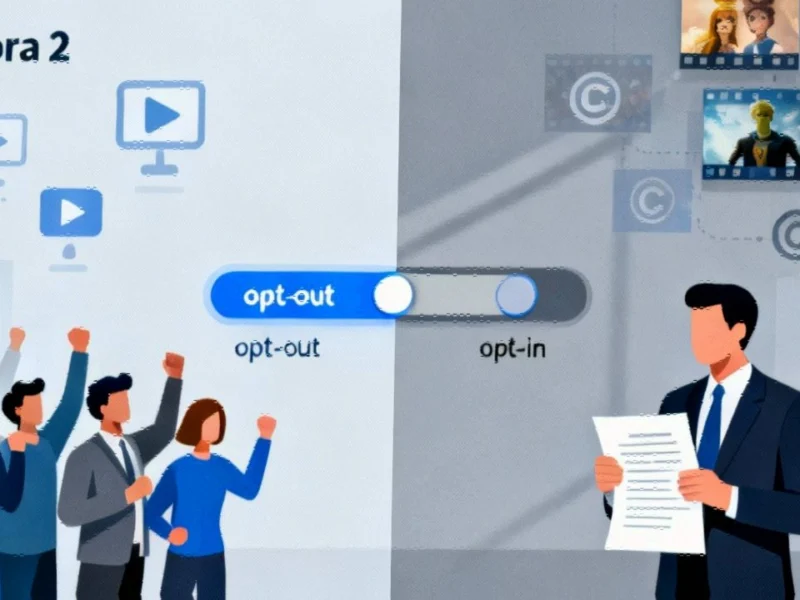YouTube’s Proactive Stance Against Digital Impersonation
In a significant move to protect content creators from emerging digital threats, YouTube has launched a sophisticated likeness detection system designed to identify and combat AI-generated impersonations. This initiative represents one of the most comprehensive responses from a major platform addressing the growing concern of synthetic media misuse., according to related coverage
Table of Contents
How the Detection Technology Works
The new system employs advanced machine learning algorithms that analyze multiple aspects of uploaded content. The technology examines facial features, voice patterns, and behavioral characteristics to create a comprehensive digital fingerprint of individuals. When new content is uploaded, the system compares it against registered creator profiles to identify potential impersonations.
What sets this approach apart is its multi-layered verification process. Unlike simple image recognition systems, YouTube’s solution incorporates temporal analysis, examining how subjects move and speak over time. This makes it significantly more difficult for sophisticated AI-generated content to bypass detection., as related article
Creator Protection Mechanisms
Content creators can now register their likeness with YouTube’s verification system. Once enrolled, the platform continuously monitors uploaded content for unauthorized use of their appearance or voice. When potential impersonation is detected, creators receive immediate notifications and multiple resolution options:, according to recent innovations
- Automated takedown requests for clear violations
- Content review and manual decision options for borderline cases
- Direct communication channels with YouTube’s trust and safety team
- Legal support resources for serious infringement cases
The Growing Threat of AI-Generated Content
The deployment of this technology comes at a critical time. AI-generated synthetic media has become increasingly sophisticated and accessible, enabling bad actors to create convincing fake videos and audio recordings. These impersonations have been used for various malicious purposes, including:
- Financial scams using creator likeness
- Spread of misinformation attributed to trusted voices
- Reputation damage through fabricated statements
- Unauthorized endorsement of products or services
Industry Implications and Future Developments
YouTube’s implementation sets a new standard for platform responsibility in the age of generative AI. Other social media platforms and content sharing services are likely to follow suit with similar protective measures. The technology also opens possibilities for broader applications, including:
- Enhanced copyright protection beyond traditional content matching
- Improved moderation of deepfake content across categories
- Potential integration with digital rights management systems
- Cross-platform collaboration for creator protection
Balancing Protection and Innovation
While providing crucial protection for creators, YouTube faces the challenge of maintaining this balance carefully. The platform must ensure that legitimate AI-assisted content creation and parody remain possible while effectively blocking malicious impersonation. This requires sophisticated context understanding and nuanced policy enforcement that can distinguish between creative expression and harmful deception.
The success of this initiative will likely influence how other platforms approach AI-generated content moderation and creator protection in the coming years.
Related Articles You May Find Interesting
- Samsung Bets Big on In-House Exynos 2600 Chipset to Outpace Apple and Qualcomm i
- Machine Learning Transforms Nanopore Technology Into Precision Protein Profiler
- OpenAI Launches ChatGPT Atlas Browser to Challenge Google’s Dominance with AI In
- OpenAI’s ChatGPT Atlas Browser Redefines Web Navigation with AI-Powered Features
- Microsoft’s Bold AI Vision: Windows 11 Transforms into Intelligent Operating Sys
References & Further Reading
This article draws from multiple authoritative sources. For more information, please consult:
- https://www.condenast.com/user-agreement/
- https://www.condenast.com/privacy-policy/
- https://www.condenast.com/privacy-policy/#california
- https://www.aboutads.info/
- https://xenforo.com
This article aggregates information from publicly available sources. All trademarks and copyrights belong to their respective owners.
Note: Featured image is for illustrative purposes only and does not represent any specific product, service, or entity mentioned in this article.



